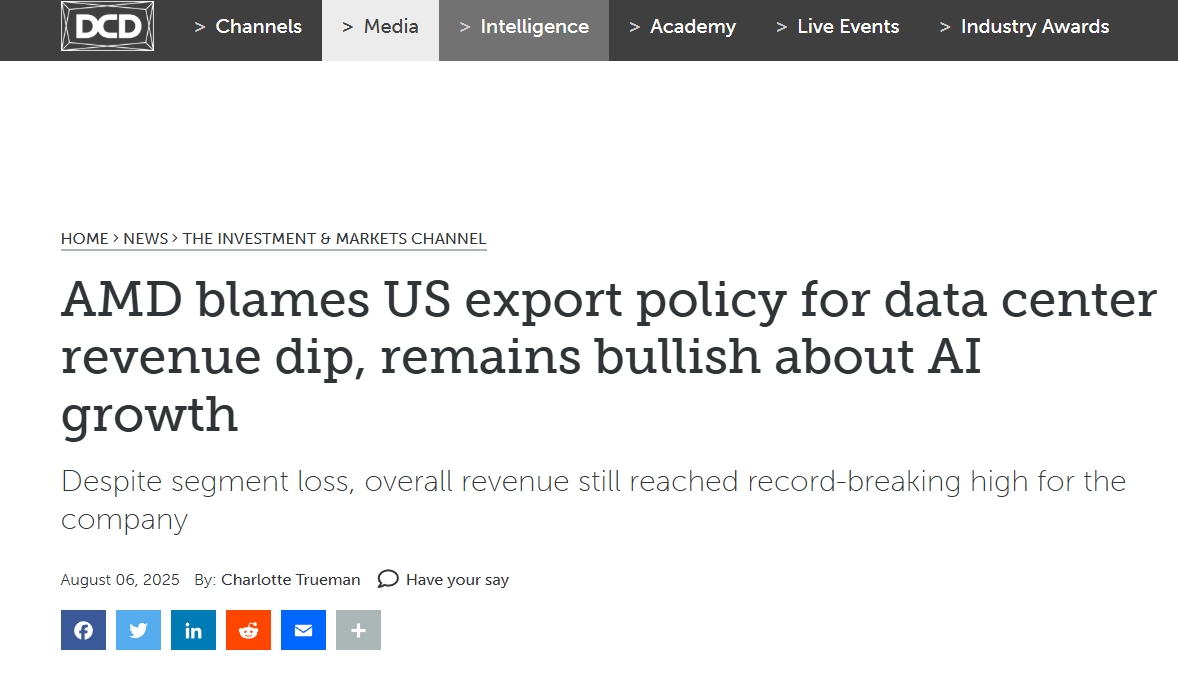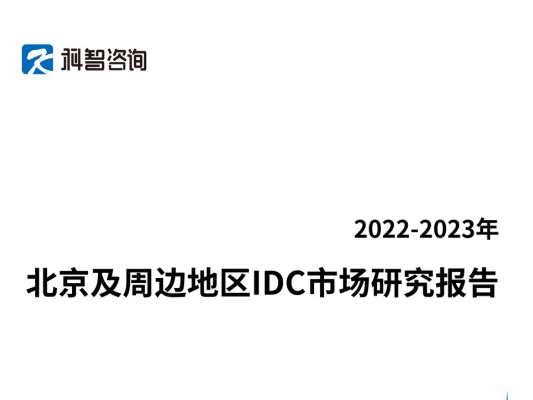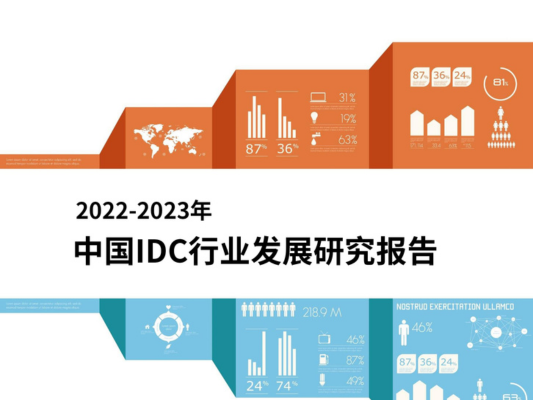Despite segment loss, overall revenue still reached record-breaking high for the company
AMD delivered a second consecutive quarter of declining revenue for its data center segment, down 5 percent on the previous quarter to $3.24 billion compared to the previous quarter.
The company primarily blamed the Trump administration’s ban on the sale of its Instinct MI308 accelerator to China, which it said resulted in $800 million in costs during the quarter and led to an operating loss of $155m, compared to $743 million in income during Q2 2024.
Without those charges, the segment would have posted a profit for the quarter. Shares in AMD dropped four percent after the results were published.
While the US government has since reversed course on this decision, AMD said that because licenses are still under review, it has opted not to forecast revenue for the chips during the upcoming quarter – recent reports claim that “turmoil” at the department has meant export license approvals have been stalled.
Despite the quarter-over-quarter loss posted by the data center segment, the total represented a year-over-year (YoY) increase of 14 percent, primarily driven by growth in Epyc CPU revenue and market share gains across cloud and enterprise customers, AMD said.
For Q2 2025, AMD posted total revenues of $7.7 billion, up 32 percent YoY and three percent higher than the previous quarter. The figure represents AMD’s highest quarterly revenue on record.
Speaking on the company’s earnings call, AMD CEO Dr. Lisa Su said production for AMD’s MI355 accelerator was “progressing well,” adding that some shipments went out in June and the company expects strong growth in the second half of the year, with “significant customer interest” for the accelerator.
“The MI355 is competitive for inferencing and training, and we anticipate continued growth into the fourth quarter and beyond,” Su said. Unlike its predecessor, the MI300, which AMD saw smaller deployments of upon its launch, Su said demand for the MI355 has been strong – “I think what we're seeing with MI355 is very competitive versus the [Nvidia] B200, GB200 family of products,” she said.
Su added that AMD saw more than 100 new AMD-powered cloud instances launch during the quarter, including multiple Turin instances from Google and Oracle Cloud, and claimed that there are now almost 1,200 Epyc cloud instances available globally.
Work on AMD’s next-generation MI400 series accelerators is also “progressing rapidly,” Su said, describing the chips as “the most advanced GPUs we have ever built with up to 40 petaflops of FP4 AI performance and 50 percent more memory, memory bandwidth, and scale-out throughput than the competition.”
Commenting on Helios, the double-wide AI rack first unveiled by AMD in June and slated to be available in 2026, Su claimed it will be “the highest-performance AI system in the world when it launches,” expected to deliver “up to a 10x generational performance increase for the most advanced frontier models.”
However, where the MI350 series can be slotting into existing data centers, Su said that with the MI400 series “there are lots and lots of details [regarding] full rack scale design implementation, and we're actively working with the largest customers right now on just ensuring that our Helios rack is fully compatible with their data center build outs as we go into 2026.”
Looking towards the next quarter, AMD has forecast revenue of around $8.7 billion, plus or minus $300 million, which would represent around 28 percent YoY growth and another record for the company.
“Looking ahead, we see a clear path to scaling our AI business to tens of billions of dollars in annual revenue,” Su said. “We are very excited about our next-generation MI400 series, which is another giant step forward on our roadmap and has been designed to deliver leadership performance at the chip, server, and rack levels. Customer interest for the MI400 series is very strong, and we're actively engaging with an expanding set of customers to support large-scale deployments in 2026.”








